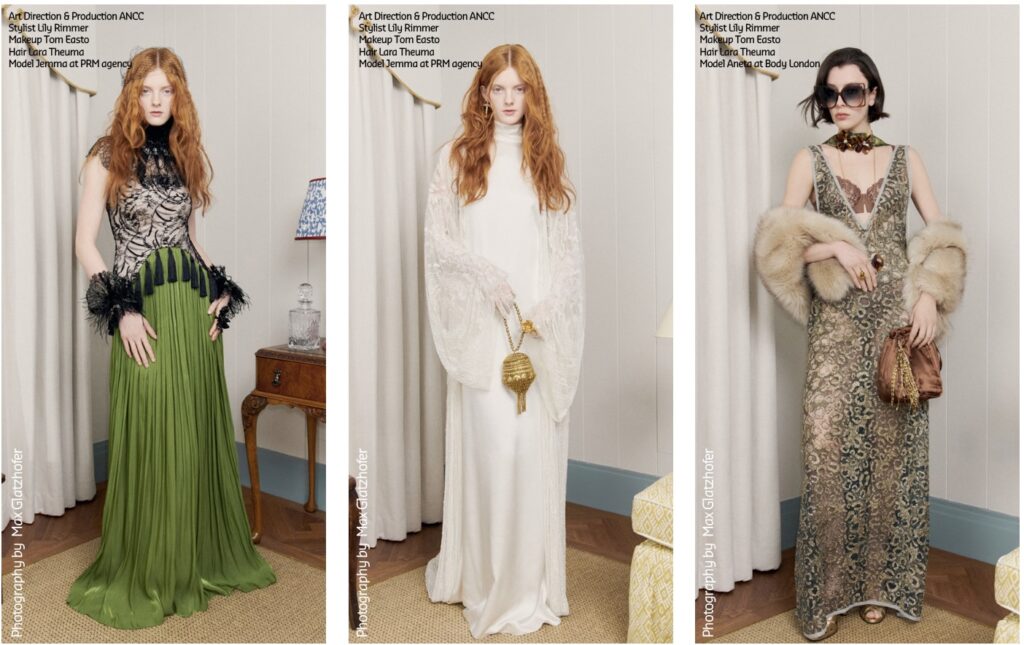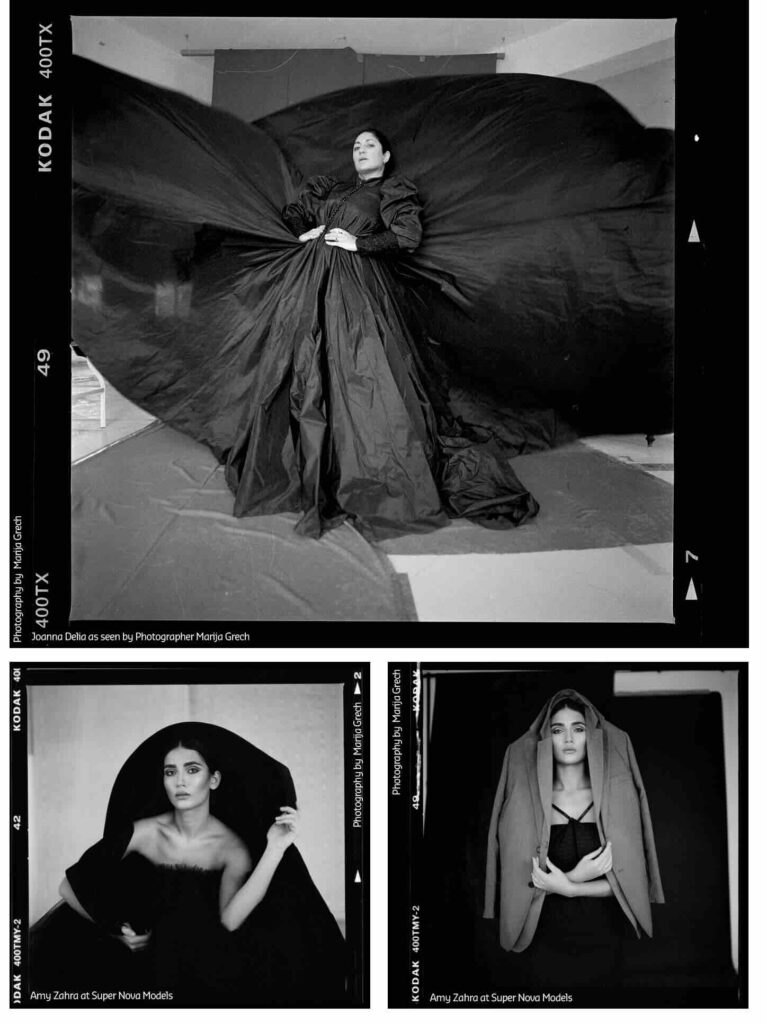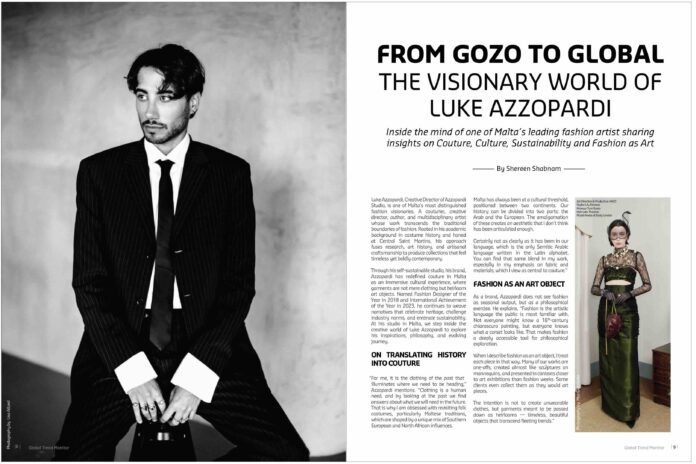Inside the mind of one of Malta’s leading fashion artist sharing insights on Couture, Culture, Sustainability and Fashion as Art
By Shereen Shabnam
Luke Azzopardi, Creative Director of Azzopardi Studio, is one of Malta’s most distinguished fashion visionaries. A couturier, creative director, author, and multidisciplinary artist whose work transcends the traditional boundaries of fashion. Rooted in his academic background in costume history and honed at Central Saint Martins, his approach fuses research, art history, and artisanal craftsmanship to produce collections that feel timeless yet boldly contemporary.
Through his self-sustainable studio, his brand, Azzopardi has redefined couture in Malta as an immersive cultural experience, where garments are not mere clothing but heirloom art objects. Named Fashion Designer of the Year in 2018 and International Achievement of the Year in 2023, he continues to weave narratives that celebrate heritage, challenge industry norms, and embrace sustainability. At his studio in Malta, we step inside the creative world of Luke Azzopardi to explore his inspirations, philosophy, and evolving journey.

On translating history into couture
“For me, it is the clothing of the past that illuminates where we need to be heading,” Azzopardi mentions. “Clothing is a human need, and by looking at the past we find answers about what we will need in the future. That is why I am obsessed with revisiting folk costumes, particularly Maltese traditions, which are shaped by a unique mix of Southern European and North African influences. Malta has always been at a cultural threshold, positioned between two continents. Our history can be divided into two parts: the Arab and the European. The amalgamation of these creates an aesthetic that I don’t think has been articulated enough. Certainly not as clearly as it has been in our language, which is the only Semitic Arabic language written in the Latin alphabet. You can find that same blend in my work, especially in my emphasis on fabric and materials, which I view as central to couture.”
Fashion as an art object
As a brand, Azzopardi does not see fashion as seasonal output, but as a philosophical exercise. He explains, “Fashion is the artistic language the public is most familiar with. Not everyone might know a 16th-century chiaroscuro painting, but everyone knows what a corset looks like. That makes fashion a deeply accessible tool for philosophical exploration. When I describe fashion as an art object, I treat each piece in that way. Many of our works are one-offs, created almost like sculptures on mannequins, and presented in contexts closer to art exhibitions than fashion weeks. Some clients even collect them as they would art pieces. The intention is not to create unwearable clothes, but garments meant to be passed down as heirlooms — timeless, beautiful objects that transcend fleeting trends.”

On sustainability and slow fashion
In an industry dominated by speed and consumption, Azzopardi as a dynamic brand remains firmly committed to slow fashion. “There’s a dichotomy here,” he admits. “The global fashion system thrives on speed by creating garments meant to expire within months. But I believe in the opposite: pieces so well made, from the finest fabrics, sometimes archival fabrics, that they live beyond trends. It is a slower process, but a beautiful one. It allows creativity to flourish, without the pressure of deadlines or celebrity-driven cycles. When the dust settles, it will become clear that this is the direction the fashion industry must take, whether you are a global brand or a small studio.”
Preserving cultural heritage
Luke’s 2022 book, Għonnella: Deconstructing the Garment, explored Malta’s enigmatic national costume. “Garments are finite. Unlike architecture, they don’t survive unless properly cared for. I felt the need to collect and expand the fragmented research that existed on the għonnella. There were sporadic articles, but much was missing. Wearing two hats, as a costume historian and a designer, I tried to reimagine how the garment developed, filling in the black holes in its story. Most importantly, I wanted to bring it out of the archives. If we leave garments behind glass, they risk becoming relics in a mausoleum. By reinterpreting them for tomorrow, we allow history to live again and be celebrated in new forms.”
Theatre, opera, and couture
Luke has also designed extensively for opera and theatre, and sees little division between those disciplines and couture. “Both are about storytelling,” he reflects. “Opera has the poetic power to transport people elsewhere, and couture does the same. The conceptual fibre that runs through an opera costume or a couture piece is essentially the same as both celebrate human stories, where we came from, and where we are going.”
Looking ahead
Luke’s future projects are equally inspired by culture, history, and art. “Our next collection is inspired by the European film industry of the 1950s and 60s. Think Italian cinema, French New Wave, Blow-Up with Veruschka. It was the first time actresses and models were celebrated as living works of art. That dark glamour, conceptually loaded with meaning, is what we’re exploring. We have sourced beautiful vintage fabrics for it, and we’re calling the collection Venus in Furs, after the infamous novel. I also just returned from two successful international showings, in Osaka and New York, and now we are looking toward Europe again. The coming year is about expanding globally, but always with the same ethos by creating timeless, sustainable, and meaningful couture.”
Readers can find out more about Luke and his current work on https://azzopardistudio.com
